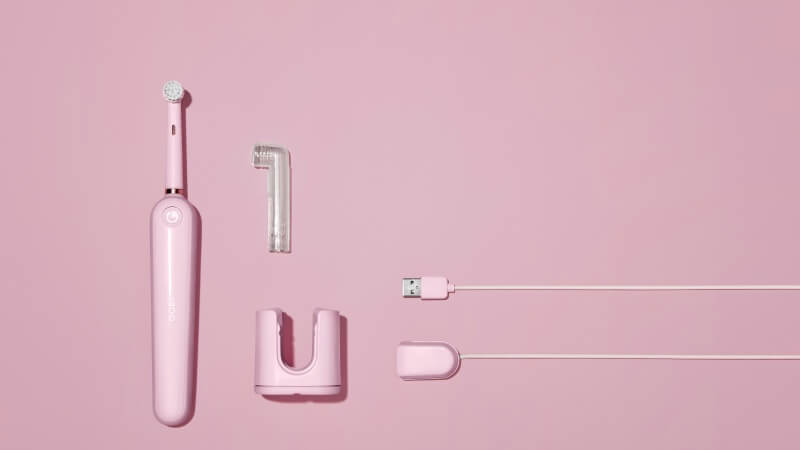
Tartar And Plaque:Remove Methods Without A Dentist
Tartar and plaque, known as dental calculus, form on teeth when plaque accumulates and starts to harden. Not only is tartar visually unappealing, but it

Most patients wonder, “How often change toothbrush?” when they leave their dentist appointments clutching a fresh toothbrush to take home.
However, adhering to the practice of replacing your toothbrush solely during your biannual dental visits, once or twice a year, may not suffice.
Yes, it’s true! Toothbrushes inevitably wear down with time and extended use. Once they reach this point of wear and tear, they cease to efficiently clean your teeth and gums as they did when brand new. Consequently, when this crucial moment arrives, it becomes imperative for your oral health that you swap your worn-out toothbrush for a pristine one.
1. Your Teeth Don’t Feel as Fresh After Brushing
If you’ve just finished brushing your teeth, but they still have a somewhat fuzzy, less-than-clean sensation when your tongue glides over them, it’s a clear signal that it’s time to swap out your toothbrush.
This suggests that either your brushing technique has lost its effectiveness or, more likely, your trusty toothbrush has reached the end of its prime and is no longer delivering optimal results.
2. The Bristles Are Worn and Bent
A high-quality toothbrush boasts bristles that proudly stand upright and quickly bounce back to their original position after being pressed down during brushing.
If your toothbrush bristles appear bent, frayed, or worse for wear, resembling battle-hardened soldiers, then it’s definitely time to bid adieu and welcome a fresh toothbrush into your daily routine.
3. An Unpleasant Odor Lingers
The presence of any odor on your toothbrush is a clear indicator that unwelcome bacteria has taken residence. (Remember, it’s the same bacteria that can sometimes lead to unpleasant breath.)
If your toothbrush exudes an uninviting scent, it’s likely to host harmful bacteria that could jeopardize both your oral and overall health.
Using such a toothbrush will introduce these bacteria into your mouth each time you brush. To maintain a clean and bacteria-free brushing experience, it’s time to replace that smelly brush with a fresh one.
4. Recent Illness
As mentioned earlier, toothbrushes are excellent hideaways for bacteria and even viruses. If you’ve recently been under the weather but are now on the mend, it’s essential to swap out your toothbrush.
Continuing to use a toothbrush that you used while battling an infection could potentially lead to re-infection.
Moreover, if you share a toothbrush storage space with your family, using the same brush could expose them to your illness. Keep everyone in the household safe by replacing your toothbrush after illness.
5. Can’t Recall the Last Replacement
Toothbrushes generally require replacement every few months for optimal performance.
If you can’t recall the last time you acquired a fresh toothbrush or swapped out the head of your electric toothbrush, chances are it’s been too long. In the interest of maintaining good oral hygiene, it’s high time to say goodbye to your old toothbrush and bring in a new one.
Much like many inquiries pertaining to oral hygiene, the longevity of a toothbrush hinges on several variables.
These include the type of toothbrush you employ, the frequency of your brushing routine, and the amount of pressure you exert while cleaning your teeth. (A gentle reminder: Excessive pressure can be detrimental to your gums and tooth enamel!) The more frequently and vigorously you engage in brushing, the more frequently your toothbrush will require replacement.
Typically, a conventional, manual toothbrush warrants replacement every three to four months.
When it comes to electric toothbrushes, the replacement interval for their heads generally ranges from one to three months on average, contingent on the guidance provided by the toothbrush manufacturer.
If you faithfully adhere to a two-minute, twice-daily brushing regimen and employ the correct brushing technique, a manual toothbrush can certainly suffice for keeping your teeth and gums clean.
Nevertheless, we highly recommend opting for an electric toothbrush, such as a Sonicare, which employs high-frequency sound waves to gently dislodge plaque and bacteria from your teeth and gums.
Electric toothbrushes offer a significantly more efficient and effective teeth-cleaning experience compared to manual toothbrushes, as they perform numerous additional “brush strokes” during the recommended two minutes of brushing.
Furthermore, electric toothbrushes help ensure that you allocate the appropriate amount of time to each quadrant of your mouth and make it easier to avoid applying excessive pressure to your teeth and gums.
In addition to these advantages, some electric toothbrushes also come equipped with toothbrush sanitizers, which can be a valuable addition to your oral hygiene routine. These sanitizers help maintain the cleanliness of your toothbrush by eliminating harmful bacteria and germs that may have accumulated over time.
Consider investing in an electric toothbrush with a built-in toothbrush sanitizer for a comprehensive and hygienic brushing experience.
In addition to your daily dental care routine of brushing twice a day and flossing, prioritizing regular dental appointments for routine checkups and professional cleanings is paramount to preserving optimal oral health.
This proactive approach helps in preventing tooth decay, and gum disease, and ensures the early detection of any emerging oral health issues before they escalate into more intricate problems.
For most adults enjoying good oral health, it is advisable to schedule a dental cleaning twice a year, coupled with an annual comprehensive examination by a dentist.
However, if you have been diagnosed with gum disease (periodontal disease) or are concerned with any other oral health concerns, your dental needs may necessitate more frequent visits for ongoing management and specialized dental cleanings.
Maintaining good oral hygiene is crucial for overall health. Knowing when and how often to change your toothbrush is essential.
Regular dental checkups, proper brushing techniques, and replacing worn-out toothbrushes can help you achieve a healthy and radiant smile.
So, remember, the answer to “How often change toothbrush?” is every three to four months for manual toothbrushes and one to three months for electric toothbrush heads, depending on the manufacturer’s recommendation. Prioritize your oral health to ensure a lifetime of happy smiles.
FAQ 1: What happens if you don’t change your toothbrush often?
If you neglect to change your toothbrush regularly, you run the risk of compromised oral hygiene. Over time, toothbrushes become less effective at cleaning your teeth and gums, potentially leaving harmful bacteria behind. This can lead to issues like tooth decay and gum disease. So, changing your toothbrush as recommended is vital to maintain optimal oral health.
FAQ 2: Do I really need to change my toothbrush head?
Yes, changing your toothbrush head is essential for maintaining good oral health, especially if you use an electric toothbrush. The bristles on toothbrush heads wear down and become less effective over time. Using a worn-out head won’t provide the thorough cleaning your teeth need. Follow the manufacturer’s recommendations, typically every one to three months, to ensure your toothbrush remains efficient.
FAQ 3: Can I extend the lifespan of my toothbrush with proper care?
While proper care can help prolong the life of your toothbrush, it’s still essential to replace it regularly. Rinse your toothbrush thoroughly after each use, store it in an upright position to allow it to air dry, and avoid sharing it with others. These practices can help maintain its cleanliness but won’t prevent bristle wear and diminished effectiveness over time.
FAQ 4: Is it necessary to use an electric toothbrush for good oral hygiene?
While manual toothbrushes can effectively clean your teeth when used correctly, electric toothbrushes offer some advantages. They provide more brush strokes per minute and ensure you brush for the recommended time in each quadrant of your mouth. This can enhance cleaning efficiency and help prevent overbrushing. However, both manual and electric toothbrushes can be effective if used properly.
FAQ 5: How can I tell if it’s time to replace my toothbrush without waiting for the signs mentioned in the article?
If you’re unsure about when to replace your toothbrush, a simple rule of thumb is to change it every three to four months for manual toothbrushes and as per the manufacturer’s recommendations for electric toothbrush heads, typically every one to three months. This regular replacement schedule ensures you maintain optimal oral hygiene without waiting for visible signs of wear or bacteria buildup.


Tartar and plaque, known as dental calculus, form on teeth when plaque accumulates and starts to harden. Not only is tartar visually unappealing, but it

We are often contacted by customers complaining about a Sonicare toothbrush not charging. A charging issue is a common problem and can sometimes be misdiagnosed

Opting for an electric toothbrush for sensitive teeth can help alleviate discomfort and further protect against gum recession. But which model is ideal for those

Have you learned how to use an electric toothbrush? It’s crucial to know not just for electricity but for any toothbrush type. Even though electric

Tartar and plaque, known as dental calculus, form on teeth when plaque accumulates and starts to harden. Not only is tartar visually unappealing, but it

We are often contacted by customers complaining about a Sonicare toothbrush not charging. A charging issue is a common problem and can sometimes be misdiagnosed

Opting for an electric toothbrush for sensitive teeth can help alleviate discomfort and further protect against gum recession. But which model is ideal for those

Have you learned how to use an electric toothbrush? It’s crucial to know not just for electricity but for any toothbrush type. Even though electric
Copyright © 2025 toothbrushsanitizerholder. All Rights Reserved.